A History of Film Noir in 10 Movies
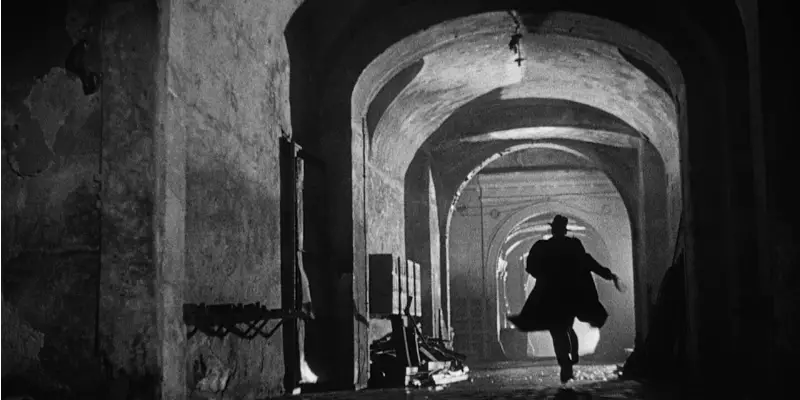
Amanda Garrett is a freelance writer with a passion for…
The old Hollywood Studio System produced many great works of art from the eternal fable of The Wizard of Oz to the harsh poetry of director John Ford’s westerns. Out of this creative environment came film noir, a style of movie-making that became very popular in the 1940’s and 1950’s.
Noir filmmakers used shadowy black and white cinematography and inventive camera angles to make movies filled with crime, lust, betrayal, and the darkness in the human heart. The noir style encompassed many types of films: there are of course murder-mysteries and heist movies, but noirs were also social problem movies, women’s pictures and even science fiction.
Today, film noir is more popular than ever. In recent years, classic movie fans have dedicated November, or “Noirvember” if you want to use the social media hashtag, as a month for the study and appreciation of noir, so without further ado here’s 10 great movies that shaped the history of American film.
Just a note on the name film noir: This term, which means black film, was coined by French critic Nino Frank in 1946. Most 40’s and 50’s audiences would not have been familiar with the phrase; instead they would have called these movies murder mysteries and crime movies.
The Maltese Falcon (1941, John Huston)
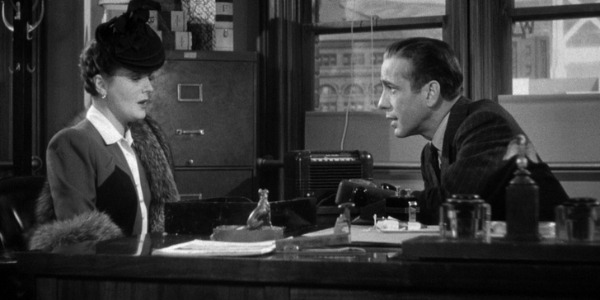
There’s a great deal of debate among film scholars about the first true noir, but, there’s no argument that the first significant film in the noir style is The Maltese Falcon. Director John Huston’s classic stars Humphrey Bogart as world weary detective Sam Spade, who battles corrupt cops, a gang of thugs, and one wily femme fatale (Mary Astor) to avenge his partner’s death and solve the mystery of the falcon.
Based on Dashiell Hammett’s popular detective novel, The Maltese Falcon sets the standard for future noirs with shadowy night cinematography, a convoluted story line, a cynical hero and a colorful supporting cast that features great character actors like Peter Lorre, Elisha Cook Jr, and Sydney Greenstreet.
Double Indemnity (1944, Billy Wilder)

The United States entry into World War II in late 1941 halted the development of mainstream noir movies, while the studios focused on making patriotic fare like Yankee Doodle Dandy and Mrs. Miniver. However, maverick screenwriter and director Billy Wilder wasn’t afraid to go his own way with an adaptation of James M. Cain’s potboiler novel Double Indemnity. The source material was considered so trashy that Wilder’s writing partner quit in protest (Wilder replaced him with crime novelist Raymond Chandler), and he had a difficult time persuading stars Fred MacMurray and Barbara Stanwyck to sign on as a sleazy insurance agent and his married lover.
Wilder also battled the motion picture censors who nitpicked everything from the script to the length of bath towel Stanwyck wears in her first scene (the towel “should certainly go below her knees” censor Joseph Breen fussed in a studio memo). Once the movie was released, all of these troubles were forgotten. Audiences had grown tired of wholesome fare, and they flocked to see this seamy tale of the dark undercurrents of suburban American life.
Detour (1945, Edgar Ulmer)
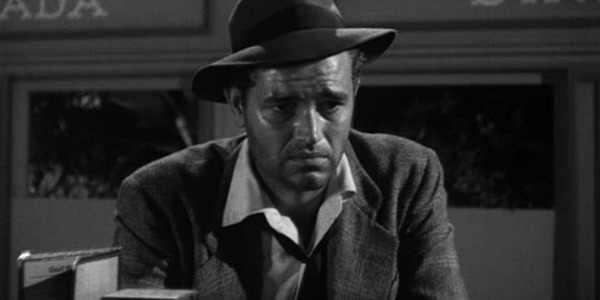
While the major studios were largely overlooking the noir style, the poverty row studios were churning out cheaply made noirs with a bare bones budget and little known actors. One of the best of these B-movies is Detour, a 68 minute thrill ride from criminally underrated director Edgar Ulmer, about a cross-country hitchhiker (Tom Neal) who has a bizarre encounter in the Arizona desert that turns into a living nightmare. In many ways, these B-movies are some of the best examples of the noir style. The cheap sets and production designs forced directors to be creative with cinematography and camera angles. Also, the motion picture censors were not as strict, which allowed B-movies more freedom to cover taboo subjects.
Gilda (1946, Charles Vidor)
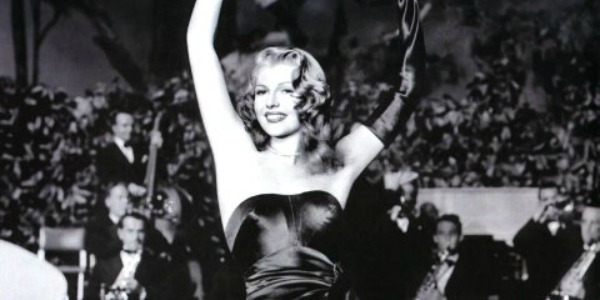
Film noir became mainstream in the postwar period. Studios were now willing to sink lots of cash into lavish noirs with big stars. One of the best of the big budget noirs is Gilda, featuring Rita Hayworth in an iconic performance as the ultimate femme fatale. Gilda features lush cinematography by Rudolph Mate, gorgeous costumes from Jean Louis, and Hayworth‘s show-stopping “Put the Blame on Mame” number.
Out of the Past (1947, Jacques Tourneur)
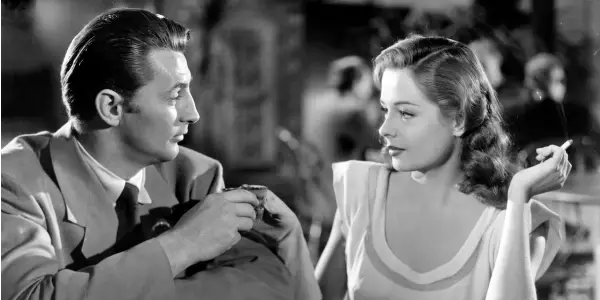
By 1947, American moviegoers were spoiled for choice with a glut of top-notch noirs appearing in cinemas. One week they could view Orson Welles‘ experimental classic, The Lady from Shanghai and then return next week for the low-budget thrills of Dick Tracy Meets Gruesome.
Even among these first rate noirs, director Jacques Tourneur‘s Out of the Past stands alone. It is simply one of the best American films ever made, with Robert Mitchum creating the definitive noir anti-hero as private detective turned gas station owner Jeff Bailey. Even more, Out of the Past is a profound meditation on fate and identity and how we can never escape the shadows in our past.
The Third Man (1949, Carol Reed)

By the late 1940’s, noir’s influence had spread beyond Hollywood. Many filmmakers outside the United States were experimenting with the noir style, most notably British director Carol Reed. The best of Reed’s noirs is The Third Man, the story of a naive American novelist (Joseph Cotten) who visits postwar Vienna to reconnect with his childhood friend Harry Lime (Welles). Reed uses that simple plot to craft a masterpiece of cinematic formalism using the bombed-out streets of the Austrian capital as the setting for a film filled with a dreamlike landscape of light and shadow.
Border Incident (1949, Anthony Mann)

As the noir style became more popular, its boundaries expanded into other genres like the woman’s picture and even the western. Director Anthony Mann‘s noir Border Incident is a modern western about illegal immigration along the US/Mexican border. This movie is still quite relevant today with a fast-paced plot about two undercover agents (Ricardo Montalban and George Murphy) who attempt to break up an illegal, but highly profitable human trafficking operation. Mann and cinematographer John Alton use the sparse Southwestern landscape to create images of stark beauty and sheer terror.
The Asphalt Jungle (1950, John Huston)
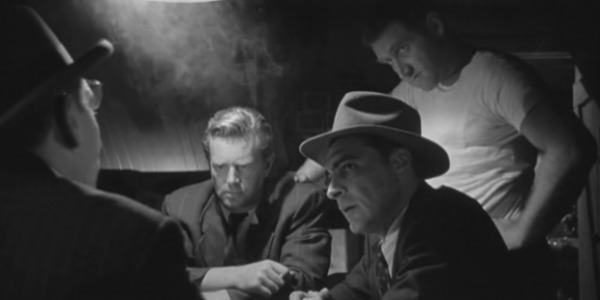
One of the great innovations of 50’s noir was the heist movie. There were many great heist capers during the decade, including Kansas City Confidential and Stanley Kubrick’s The Killing, but Huston’s The Asphalt Jungle is the granddaddy of them all.
The movie is a taut thriller about a group of Midwestern low lives and criminals who band together to pull off a complicated jewel theft. Terrific performances abound, especially from Sam Jaffe as a criminal mastermind, and a young Marilyn Monroe. But the film’s pièce de résistance is a lengthy, suspenseful scene of the gang pulling off the heist itself.
Sunset Boulevard (1950, Billy Wilder)
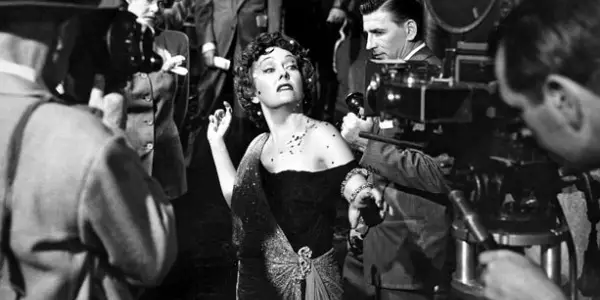
Noir turned decadent in the 1950’s with big name directors like Vincente Minnelli and Alfred Hitchc*ck transforming the genre to suit their own particular obsessions. Wilder’s corrosive Hollywood satire Sunset Boulevard is among the best of these films.
The image of hapless screenwriter Joe Gillis (William Holden) floating dead in silent film star Norma Desmond’s (Gloria Swanson) swimming pool is one of the most crackling opening scenes in any noir. Wilder never lets up from there, taking viewers on a wild ride that includes Cecil B. DeMille, a chimpanzee funeral, and the most memorable staircase descent in movie history.
Kiss Me Deadly (1955, Robert Aldrich)
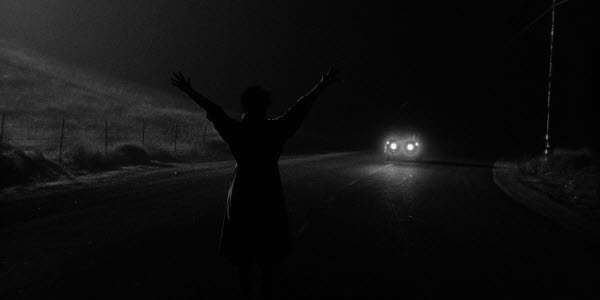
By the late 1950’s, noir had largely run its course. There would still be a few proto-noirs produced in the 1960’s and 1970’s (Chinatown is a good example of this type of film), but the noir style largely ran out of steam. Instead, audiences sought new thrills with teen movies, lavish epics, and low budget horror films. One of the last great noirs was Kiss Me Deadly, which is based on Mickey Spillane’s pulp novel.
While the book was about illegal drugs in the L.A. criminal underworld, director Robert Aldrich changed the plot into a cold war parable of nuclear destruction. Detective Mike Hammer (Ralph Meeker) is very much in the Sam-Spade mold of punch first and ask questions later, but this private eye stumbles across something much worse than the theft of a black bird. In a bravura final scene, Kiss Me Deadly moves from noir into science fiction; Hammer unwittingly sets off a nuclear apocalypse, and in this most nihilistic of noirs, an art form that began in shadows fades into black.
If you’re new to noir, these 10 films above are a great introduction, but don’t stop there. I’ve just scratched the surface of the many masterpieces that noir has to offer.
What are your favorite film noirs? Who are your favorite actors and directors in the film noir genre?
(top image: The Third Man – source: British Lion Films)
Does content like this matter to you?
Become a Member and support film journalism. Unlock access to all of Film Inquiry`s great articles. Join a community of like-minded readers who are passionate about cinema - get access to our private members Network, give back to independent filmmakers, and more.
Amanda Garrett is a freelance writer with a passion for classic films. You can catch her writing reviews and features at Film Inquiry or at her website, Old Hollywood Films.













